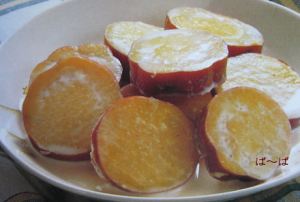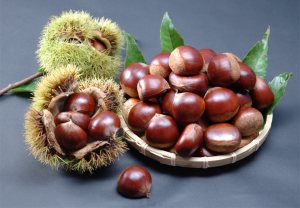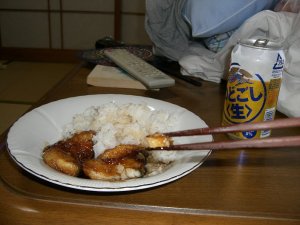(Note: Please check out the recipes for Yellowtail Teriyaki and Cashew Chicken for more useful Japanese cooking vocabulary!)
More Nintendo cooking, and once again we have a rather Chinese dish, but it’s very well-known in Japan. Next time I will feature something more traditionally Japanese. Any requests? We’ve gotten through a lot of cooking words with the past two recipes, so if you see words here you don’t recognize, check back in the links posted above. With that said, let’s get cooking!

チンジャオロース – Roast Chinjao
Yield: 4 servings
Ingredients:
| English | Japanese |
|---|---|
| 200 g thinly sliced beef | 牛肉(網焼き用) 200g |
| 2 tsp + 1 Tbsp soy sauce | しょうゆ 小さじ2+大さじ1 |
| 1 tsp + 1 Tbsp sake | 酒 小さじ1+大さじ1 |
| 2 tsp potato starch (corn starch is fine) | 片栗粉 小さじ2 |
| 1 tsp + 1/2 tsp sesame oil | ゴマ油 小さじ1+小さじ1/2 |
| 4 green bell peppers | ピーマン 4個 |
| 4 cm green onion | 白ねぎ 4cm長さ |
| 1 1/3 cm fresh ginger | しょうが 2/3片 |
| 2 cloves garlic | にんにく 2片 |
| 1 Tbsp oyster sauce | オイスターソース 大さじ1/4 |
| 1/2 Tbsp sugar | 砂糖 大さじ1/2 |
| Dash of pepper | こしょう 少々 |
| 1 Tbsp water | 水 大さじ1 |
| 4 tsp salad oil | サラダ油 小さじ4 |
Preparation:
De-seed and core the bell pepper, then slice lengthwise into thin strips. Mince the 4 cm green onion finely. Peel the 1 1/3 cm fresh ginger, then mince finely. Peel the 2 cloves of garlic, then mince finely. Set aside.
Cut the 200 g thinly sliced beef into narrow strips. Place the beef in a bowl, then cover with 2 tsp soy sauce, 1 tsp sake, and 2 tsp potato starch. Mix well. Pour 1 tsp sesame oil into the center of the meat, then set aside.
In a small bowl, mix together 1 Tbsp sake, 1 Tbsp oyster sauce, 1 Tbsp soy sauce, 1/2 Tbsp sugar, dash of pepper, 1/2 tsp sesame oil, and 1 Tbsp water. Set aside.
Add 2 tsp salad oil to a frying pan and set on high heat. Add the beef and stir until it’s color changes to brown. Place on a plate and set aside.
Add 2 tsp salad oil to a frying pan and set on medium heat. Add the green onion, ginger, and garlic, then cook until they begin to smell strongly. Add the bell pepper and stir, then add the beef again. Add the soy sauce mixture from before, then turn the heat to high. Stir until most of the sauce is gone, then transfer to a plate and enjoy.
| Japanese | Romaji | Meaning |
|---|---|---|
| 牛肉 | gyuuniku | Beef |
| 片栗粉 | katakuriko | Potato starch (very much like corn starch) |
| ゴマ | goma | Sesame seeds |
| 油 | abura | Oil |
| 白ねぎ | shironegi | Green onion (though literally “white onion” in Japanese) |
| にんにく | nin-niku | Garlic |
| こしょう | koshou | Pepper (can refer to black or white, but is usually black) |
| 種 | tane | Seeds; kernels |
| みじん切りにする | mijin kiri ni suru | To cut finely; mince |
| 皿 | sara | Plate; dish |
| さいばし | saibashi | Long chopsticks for cooking and serving food |
| 手早くほぐす | tebayaku hogusu | To quickly loosen or separate (here, used to decribe quickly stirring the meat in the pan) |
| 香り | kaori | Smell; scent; aroma; fragrance |








